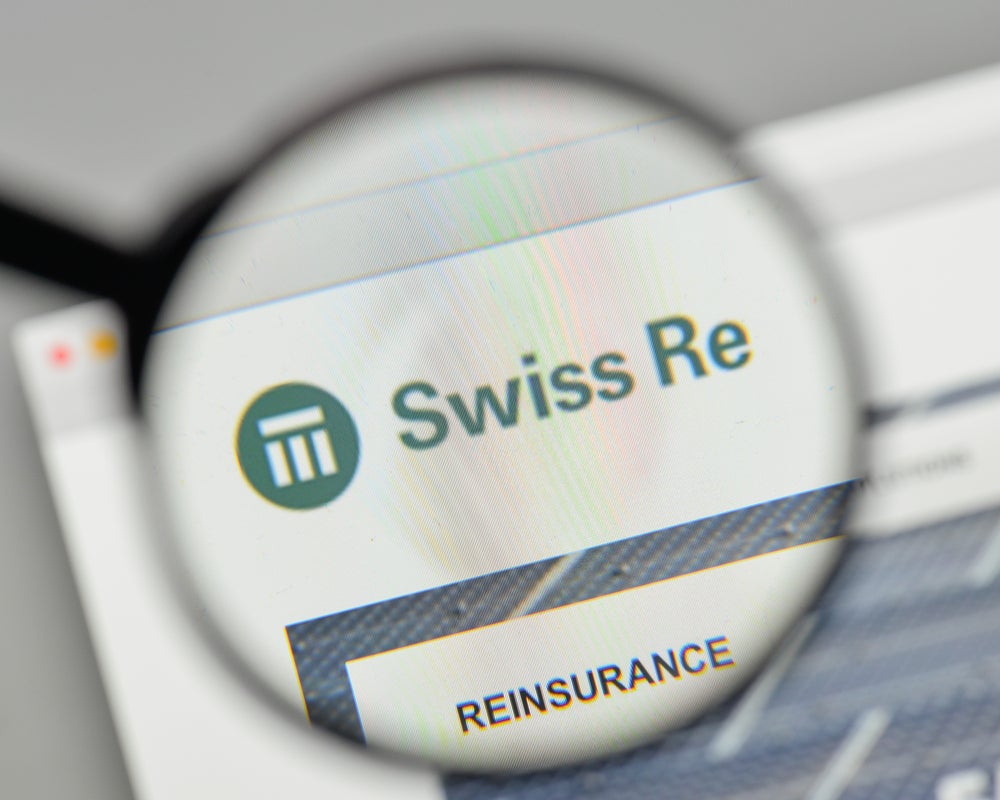come to the rescue of dealers’ margins, says Brian Rogerson.
market, more pressure than ever is being put on dealers’ profit
margins from selling new and used cars at the point-of-sale
(PoS).
Whereas some five or six years ago the profit that
a dealer could make from the sale of the ‘metal’ itself would be
somewhere upwards of 80 to 90 percent of the deal, it is now a
totally different world.
With the growing recession, chassis-profit margins
are being eroded and, at the same time, income from PPI commissions
is increasingly uncertain due to government regulation.
Car dealers, however, still need to achieve a sound
bottom line to survive.
One UK motor lender tells Motor Finance:
“Back in the early 1990s the average profit, net of expenses and
VAT, which could be achieved on purely selling a car, would be
around £1,500 to £2,000 a vehicle. Today, that figure is probably
around £700 and in some cases even less.”
To combat this, a range of finance and insurance
(F&I) products have evolved aimed at increasing the overall
profit margin.
The lender explains: “These include various forms
of GAP insurance and even tyre and MOT cover.
How well do you really know your competitors?
Access the most comprehensive Company Profiles on the market, powered by GlobalData. Save hours of research. Gain competitive edge.

Thank you!
Your download email will arrive shortly
Not ready to buy yet? Download a free sample
We are confident about the unique quality of our Company Profiles. However, we want you to make the most beneficial decision for your business, so we offer a free sample that you can download by submitting the below form
By GlobalData“These are often sold in packs, for example
‘silver’ or ‘gold’, and each is priced so that buyers have the
choice of level of cover they need.
“The package price will increasingly depend on the
price of the vehicle being acquired. A standard package including
GAP insurance, paintwork protection and tyre cover might retail at
around £800 – but cost the dealer only some £150 to £200.”
The popularity of GAP
insurance
GAP insurance has inevitably become more popular as car buyers try
to hedge against falling residual values.
The value of both new and used car prices
has taken a battering over the last 12 months as sales have
collapsed and dealers are forced to cut prices due to the global
downturn.
While this may be good news for those buyers still
in the market to acquire a car, it has caused severe problems for
those customers unfortunate enough to have their car stolen or
written off.
These have found that insurers only pay out the
current market value of their car – which may fall short of what
they paid for their vehicle.
Ian Crowder of AA Financial Services explains:
“There has been a significant increase in the number of customers
taking our GAP insurance on sales through dealerships recently.
“This type of insurance is coming into its own by
encouraging people into buying a car that otherwise may be nervous
about doing so at this time. Cars are losing value fast and buyers
are getting into negative equity very quickly if anything goes
wrong.
“At present, approximately a fifth of all our sales
now include GAP cover.”
One GAP provider believes that a reason for the
rising success of GAP insurance is its attractiveness at the PoS –
even for those customers that do not expect their insurer to pay
new for old in the third or fourth year of ownership.
He says: “If a customer buys a car and plans to
replace it in four years’ time, he financially prepares for the
depreciation by saving for another car in the meantime, or saving
for another deposit to finance the replacement.
“Far too often that intention does not go to plan.
Replacement can be brought forward unexpectedly due to theft,
accident or fire.
That is when GAP insurance delivers – and takes
care of the loss. Motorists cannot and do not budget for the
accelerated depreciation loss, or negative equity loss, on a
finance agreement that insurance write-off imposes.”
“Lee Taylor, automotive director at Mondial
Assistance, tells Motor Finance that the company is
shortly planning to launch an innovative form of GAP insurance
which can be bought on a monthly basis and a flexibility to suit
the “lifestyle requirements of individual customers”.
“It is designed,” he adds, “to combine several
aspects of GAP cover and to be a unique income-replacement
product.”
Warranty sales increase in
recession
Mondial, part of Allianz Group, is the
UK’s second-largest motor manufacturer warranty services
provider.
Recently it has witnessed a 22 percent
year-on-year increase in dealers choosing to offer free three-month
warranties on older used cars.
Liz Grindell, Mondial’s UK warranty manager
explains: “Traditionally, a 12-month warranty is offered as part of
an approved used-car programme, but we have developed a
comprehensive warranty package that manufacturers and dealers still
provide at the PoS – but for a shorter period of time.
“It allows dealers to offer customers an attractive
deal on older-car stock that they may have previously shied away
from promoting.
“Boosting older used-car sales volume can, after
all, generate interest in younger makes and models by increasing
forecourt traffic. In addition, it not only reduces dealer resale
costs, it gives them the opportunity to increase revenue by selling
on an extended warranty package.”
Grindell believes that a good warranty provider
should offer a bespoke service that caters for the needs of each
individual manufacturer and their customers – with an emphasis on
offering a premium level of customer care.
“If a manufacturer can deliver the right level of
cover that encompasses good support when the customer needs it
most, they should secure high levels of customer retention to see
them through the recession,” she observes.
A new pay-as-you-drive
cover
One company believes that a totally
different insurance product is required for the post-recession
marketplace.
Coverbox has designed a pay-as-you-drive insurance
policy that aims to virtually eliminate car theft while at the same
time allowing car buyers to have comprehensive cover paid for by
the mile.
The price per mile varies according to the time of
day or night – off-peak, peak or super-peak times.
Penny Searles, Coverbox’s commercial director tells
Motor Finance that customers initially log onto the
company’s website to receive a selection of quotes from a panel of
insurers consisting of Co-operative Insurance Services, Allianz,
Equity Red Star and Groupama.
“The customers then tell us how many miles they
expect to drive,” she explains, “based on established driving
habits and what times they tend to drive them.
“We then forecast how much, on a per-mile basis,
their insurance will cost.”
The company fits a ‘Coverbox’ to their car which
records the mileage covered and the times they drive.
The unit usually takes less than an hour to fit, by
technicians who travel to the customer, making the service very
user-friendly.
“Some months customers may do a little more mileage
than planned and other months they may not.
Over the year it will even out, but if they cover
fewer miles than estimated then they can have a refund – or we
credit their insurance bill for the following year,” Searles
says.
Searles stressed that Coverbox, which is not yet
available at dealers’ PoS, will work like a monthly utility
bill.
The key difference, however, is that low-risk
drivers who use their cars little, and in off-peak periods, are not
penalised by the actions of or accidents suffered by higher-risk
drivers driving at peak times.
“And of course,” she adds, “Coverbox includes theft
tracking which would cost hundreds of pounds on top of a
traditional insurance quote.”
Complimentary insurance hits the
market
In the current economic climate it is
crucially important for car dealers to take advantage of every deal
that becomes available to them.
As a consequence, RBS Insurance has
decided to team up with BMW to establish a Mini 7-Day Complimentary
insurance product aimed at securing more deals for dealers at the
point of sale.
Darren Siddle, RBS Insurance’s business sector
manager says that the insurance covers new and used car buyers,
while subsequent dealer take-up levels have grown to the extent
that over 100,000 7-Day policies were issued during 2008.
“We launched this product in 2006 in franchised
dealerships and around 15 percent of motorists that use 7-Day
Complimentary cover go on to buy an annual policy with us,” he
says.
A spokesperson for Rybrook Worcester, an approved
BMW and Mini dealer, confirms: “We use the service on around 90
percent of our car sales – which is a huge proportion of anyone’s
custom.
“Drivers think it is great to have immediate cover
available with no requirement to wait for a new certificate from
the customer’s insurer.”
Leanne Thames, insurance product manager at BMW
Financial Services adds: “The 7-Day Complimentary insurance makes
significant improvements in the number of customers taking out full
annual policies on the back of their free 7-Day cover.
“It is greatly helping us to grow our motor
insurance portfolio.”
The rise and rise of GAP
insurance
From its origins as a basic optional
supplementary insurance which provided protection against risks not
covered by a normal “fully comprehensive” motor insurance policy,
Guaranteed Asset Protection (GAP) insurance has evolved in recent
years into a highly sophisticated product suite.
If fully-comprehensive motor insurance were truly
‘fully comprehensive’ there would be no demand for GAP
insurance.
However, fully-comprehensive insurance allows
insurers to reduce their risk (and customers’ cover) annually by
applying depreciation while potentially charging buyers more each
year.
In this respect auto insurance differs from any
other asset insurance where cover would include the replacing of
insured assets on a new-for-old, like-for-like basis for the period
of the policy.
Moreover, many UK-registered vehicles lose anywhere
between 34 to 90 percent of their value in three years, or 65
percent on average.
When converted to sterling in real situations,
vehicle owners lose out substantially.
Principally for those reasons, GAP insurance has
evolved and is no longer viewed with the suspicion it was some 10
years ago. Today GAP insurance is a popular protection at the PoS
which comes in three distinct forms.
GAP
Finance GAP is specifically designed to
help motorists cover any potential negative equity in the event of
an insurance write-off.
Example
Cash price of vehicle: £15,000
Initial deposit: £1,000
Balance taken on finance: £14,000
Finance interest at 5 percent flat over
60 months: £3,500
Balance to be financed: £17,500
After two years the vehicle is stolen and
written off by the insurer.
To settle the finance agreement on the
car the customer is required to pay: £9,750
But the insurer will only pay: £7,500
Customer will need to find difference of:
£2,250
If the customer has GAP insurance the policy would
pay £2,250 to the lender on his behalf and settle the account.
Negative equity cases are potentially far worse on
finance agreements where balloon payments or option-to-purchase
figures are a feature – because the level of capital repaid each
month is less and therefore finance settlement figures are
higher.
Finance GAP is often used by motor lessors where it
helps to repay the outstanding rentals due to a lessor up to the
claim limit chosen and for the period required.
Return to Invoice GAP
Return to Invoice (RTI) GAP is a GAP
cover designed to help car buyers recover the full original
purchase invoice price in the event of an insurance write-off.
Example
Cash price of vehicle: £15,000
After two years the vehicle is stolen and
written off by the insurer.
The insurer agrees to pay: £8,000
Leaving a shortfall of: £7,000
If the customer had purchased RTI insurance the
policy would have paid £7,000 to enable the customer to buy a
replacement car for the same price originally paid without using
extra funds.
It therefore pays the difference between what the
customer pays for the vehicle and what the motor insurer agrees to
pay – up to the claim limit chosen and the period required.
RTI insurance is not normally used for leasing or
contract hire agreements since the hirer has little financial
interest in the original invoice price.
However, if a high level of advance leasing rentals
were paid, RTI cover should be sufficient to recover those to help
fund a replacement car.
Vehicle Replacement Insurance
GAP
Vehicle Replacement Insurance (VRI) GAP
will pay the difference between the amount a customer receives from
his motor insurance policy and the purchase price of the nearest
equivalent specification of the original vehicle.
Example
Cash price of vehicle: £15,000
After two years the vehicle is stolen and
written off by the insurer
The insurer agrees to pay: £6,500
Customer faces financial loss of:
£8,500
The situation is even worse than it looks since the
manufacturer has since discontinued his specification and the
nearest equivalent is now £17,000.
If the customer has purchased VRI GAP the policy
would pay his financial loss of £8,500 and the extra £2,000 needed
to buy the nearest equivalent specification.
Like RTI insurance, VRI GAP is infrequently used in
leasing or contract hire agreements.







